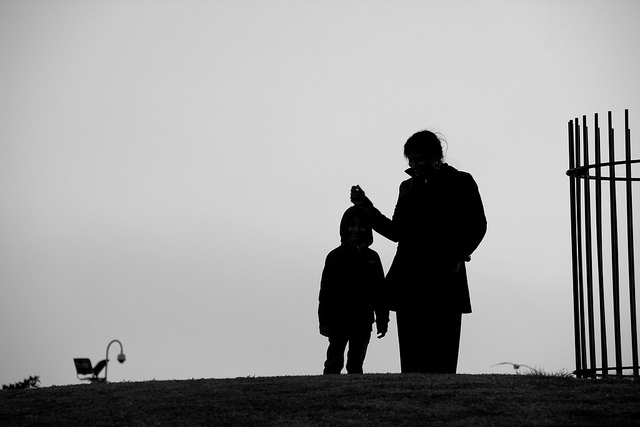Lone mother poverty is a critical issue in Australia and elsewhere. One in five Australian families are headed by lone parents, and of these, most are headed by women (ABS 2016). Not surprisingly, single mothers with dependent children have the highest rate of poverty across all demographic groups (Olson and Banyard 1993, ACOSS 2016). Lack of income has been identified as the single most important factor in accounting for the differences between parent and children’s wellbeing in single parent families and those in other family forms (Lindblad-Goldberg 1989, Amato 1993). Tackling single mother poverty is thus an essential need.
In Australia, the Child Support Scheme was introduced in the financial year 1988/89 with the direct purpose of improving living standards and enhancing the wellbeing of children growing up in single parent households in the context of government fiscal constraint (Smyth et al. 2015, Vu et al. 2014, Carberry 1992). Child support payments are private cash or in-kind transfers between non-resident and resident parents to assist with the costs of raising children through various payment methods including Child Support Agency, Court, direct transfer between parents or other informal venues.
Child support payments are a vital part of lone-mothers’ income package, which also can include public welfare payments, including (in Australia) family tax benefits, parenting payment, rent assistance, and income from employment or wages. More than 600,000 of the one million Australian children with a parent living elsewhere are under child support arrangements (ABS 2011). When the Child Support Scheme was first introduced, there was a notable reduction in poverty rates for children in sole-parent households (Harding and Szukalska 2000, Ridge 2005).
However, since inception, little rigorous evaluation of the effectiveness of the Child Support Scheme, and its poverty-reduction potential, has occurred. Major reforms to the Scheme in 2006-08 altered the calculation of child support amounts, with a view to improving both fairness and compliance of payments (Smyth and Henman 2010, Smyth et al. 2015). The new formula introduced greater sensitivity to the cost of children as they relate to child age and parental income and to the proportionate time children spend in overnight care with each parent. Recent modeling of these changes has shown that lone mothers were most likely to be disadvantaged by these reforms (Smyth et al. 2015, Summerfield et al. 2010, Vu et al. 2014).
Our study aimed to further build the evidence about the poverty-reduction potential of child support. We used national cohort data from a longitudinal cohort of Australian single mothers and their children in B cohort (aged 0-1 in 2004) and K cohort (aged 4-5 in 2004) participating in the Longitudinal Study of Australian Children (LSAC), over 6 biennial waves from 2004-2014. Our purpose was to investigate the role of child support payments in ‘lifting’ single mothers above the poverty line (set at 60% of median equivalised household income) (ABS 2015, Bradshaw et al. 2007) and/or above the median equivalised Australian household incomes.
Which mothers are likely to receive child support, and who miss out?
In our pooled population sample of single mothers with children in both cohorts over six waves (2260 mothers, 5068 observations), there are between 673 and 1068 who are eligible for child support at each wave. Approximately 77% received child support payment in the previous month, mostly through Child Support Agency (70%), and direct transfer between parents (20%).
Our multivariate analysis indicates that mothers are more likely to receive child support if they live in a more socio-economically advantaged area (p<0.1). Mother’s likelihood of receiving child support also depend on the characteristics of the non-resident parent: the closer the non-resident parent to mother’s home or the more educated he is, the more likely she is to receive child support (p<0.001). That is, those with more capacity to arrange (mothers) and pay (fathers) child support were more likely to do so; those without such capacity were likely to miss out on child support.
Does child support reduce lone mother poverty?
Our multivariate analyses show that single mothers receiving child support were significantly more likely to be lifted out of poverty. Specifically, compared to those not receiving child support, mothers receiving child support were 1.7 times more likely to be above the poverty line (but still below the median equivalised household income) (p<0.07); and 1.1 times more likely to be lifted above the median (p<0.1). This was the case even when a range of factors were accounted for (mothers’ age, education, country of birth; number of children; parent living elsewhere’s education and distance from mother’s home; neighbourhood socio-economic advantage).
Ways forward
More compliance and implementation is needed. Together, our findings show that child support is effective in reducing lone-mother poverty, despite not being the only poverty reduction mechanism for single mothers. Child support was found to lift recipient mothers above the poverty line, and in some cases, above median household income levels. However, in our sample, around a quarter of eligible single mothers reported no child support arrangements and one fifth receiving child support did not get up-to-date payment. Our findings thus provide impetus for ongoing efforts to implement, monitor and ensure compliance with child support payments.
Safeguard for those missing out child support. We also show that those who receive child support are more likely to be relatively socio-economically advantaged, reflecting most likely capacity to arrange child support, or capacity to pay. As such, we recommend that safeguard being provided for those who ‘fall through’ this gap.
Our collective and governmental responsibility is to build payee capacity to pay via both tax and welfare systems; and to safeguard those who cannot. Australia is ‘in conversation’ with comparator countries to continually improve our Child Support Scheme. Learning from settings where income guarantee has been implemented may be a valuable next step for our consideration.
This blog is summarized from our working paper. The study was previously presented at the Australian Social Policy Conference at UNSW on 27 September 2017.








Recent Comments